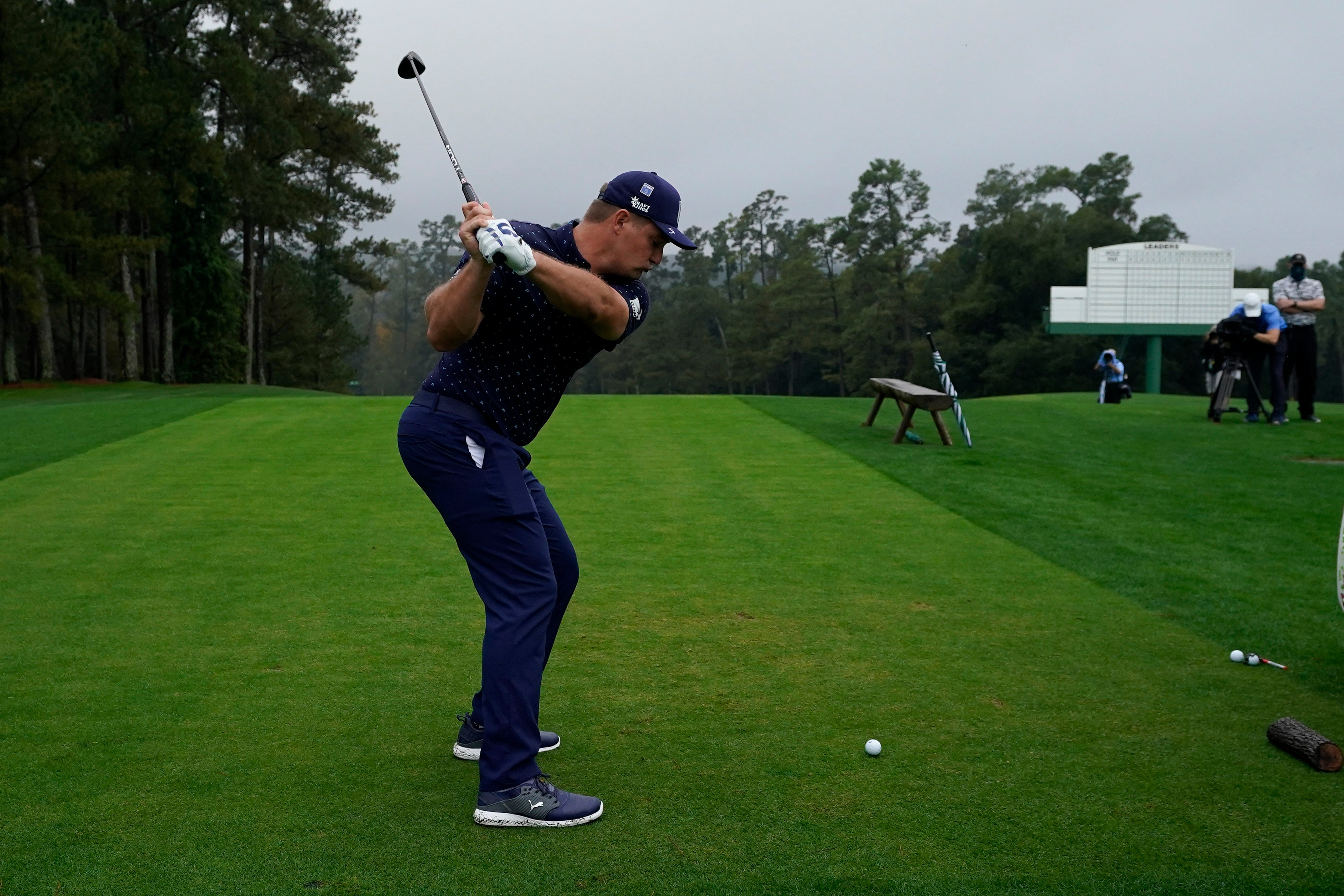DeChambeau has grand plan to cut Masters course down to size
Bryson DeChambeau is going where no golfer has gone before, hitting tee shots far enough to take aim at some of Augusta National's par-4s and leaving himself short irons to reach the course's venerable par-5s

Your support helps us to tell the story
From reproductive rights to climate change to Big Tech, The Independent is on the ground when the story is developing. Whether it's investigating the financials of Elon Musk's pro-Trump PAC or producing our latest documentary, 'The A Word', which shines a light on the American women fighting for reproductive rights, we know how important it is to parse out the facts from the messaging.
At such a critical moment in US history, we need reporters on the ground. Your donation allows us to keep sending journalists to speak to both sides of the story.
The Independent is trusted by Americans across the entire political spectrum. And unlike many other quality news outlets, we choose not to lock Americans out of our reporting and analysis with paywalls. We believe quality journalism should be available to everyone, paid for by those who can afford it.
Your support makes all the difference.Bryson DeChambeau is golf’s latest litmus test, hammering drives that sound and soar like mortar fire and cut corners in ways golf-course designers and his fellow pros never dreamed.
By the time the Masters ends Sunday, fans might still be debating whether that’s good for the game. Either way, though, real estate agents will be thrilled.
DeChambeau, in just his fifth season on tour, is on a mission to prove that courses worldwide — even championship venues now routinely stretching almost 7,800 yards — have run out of room. Last month, he overwhelmed a legendarily tough Winged Foot course and won the U.S. Open by six strokes. This week, he plans to cut even-more venerated Augusta National down to size.
“I’m just trying to get up there like I’m in a batter’s box swinging as hard as I can, trying to hit a home run,” DeChambeau explained this week. “I don’t know if there’s a better way to say it.”
The pandemic already guaranteed a Masters unlike any other. There will be no fans — strike that, patrons — on the grounds, and pomp and circumstance have been reduced to a minimum. But DeChambeau took advantage of the time off to add bulk to his frame and velocity to his swing; with a few tournaments under his belt, he’s far enough along in his quest to harness that added power with increasing effectiveness. That’s in addition to a championship-caliber short game.
Earlier in the week, DeChambeau was out on the practice range experimenting with a 48-inch-long driver — right up against golf’s rulebook and nearly two inches longer than most players use. The cart drivers who retrieve balls off the practice range ended up plucking some of those tee shots from bushes at the back of the range where they normally only find dead leaves. That didn’t augur well for the competition.
“It’s a substantially easier golf course for him than it is for everybody else,” said Justin Thomas a long hitter himself who joined DeChambeau, defending champion Tiger Woods and former champ Fred Couples for a practice round. “I think once he starts messing with that longer driver and has a little bit more free time, then as crazy as it is, he might be able to hit it further.”
Golf has seen long hitters before, of course, and has plenty in the current ranks as well — Dustin Johnson, Brooks Koepka, Rory McIlroy. Woods’ first Masters title in 1997 wrapped up at 18 under — still a record — and launched a course-expansion effort that was dubbed “Tiger-proofing.”
Half the holes at Augusta National were lengthened in 2001. In subsequent years, trees were added as sentinels to a handful of holes, a second cut of rough materialized and fairways were narrowed. About 500 yards were added all told.
In one memorable episode, the Masters tournament committee shelled out several million dollars to buy a piece of land about the size of four parking spaces from the country club next door to move back the 13th tee. All that expensive landscaping bought the green jackets less time than they imagined.
Nearly a decade ago, Woods finally conceded those changes had narrowed his edge.
“I used to hit driver and iron to every par-5. That’s what Freddie (Couples) used to do. … And back when Jack (Nicklaus) played in his day, that’s what he used to do,” Woods recalled. “That’s not the case anymore.”
Except it is, at least in DeChambeau’s case. During his practice round with Woods, they began comparing notes. At the 505-yard, par-4 11th, DeChambeau hit a pitching wedge and asked Woods, “What did you hit in ’97?”
Woods replied: pitching wedge.
“I’m like, ‘That’s cool, all right,’” DeChambeau said.
Pushing back the tournament from April to November means less daylight and likely lower temperatures. Rain was forecast for the opening round. None of that has dampened spirits, however, even among those pros who expect to watch the DeChambeau show from farther back in the fairway.
“If trophies were handed out just for how far you hit it and how much ball speed you have, then I’d be worried,” McIlroy said. “But there’s still a lot of different aspects that you need to master in this game.”